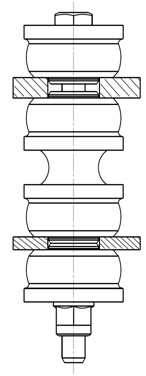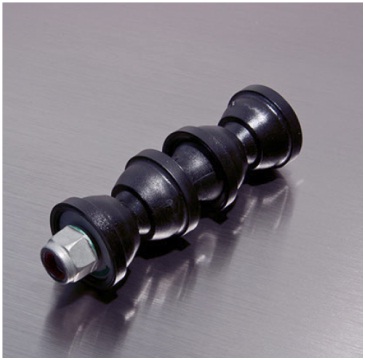PogoStik and HiPerStik Attributes and Benefits

PogoStik and HiPerStik Attributes and Benefits -
The PogoStik, and its high performance variant the HiPerStik, are substitutes for ball joints and bushings in stabilizer linkages.
The main objectives of stabilizer linkages seem simple: To hold two chassis hard points that move in different curves in a predefined distance to each other. But when high loads and a demanding environment come into the equation, the mission becomes quite difficult.
In this as in many chassis applications the ball joint has a long history.
A certain failure rate occurs with ball studs due to the following inherent design challenges:
- Impact-intolerant and very durability-relevant seal system.
- Strictly limited range of angular movement.
- High sensibility regarding the dimensional and surface quality of the chassis hard points.
The basic design difficulty of the ball joint lies in the difficulty of creating a durable dimensional fit between three very stiff components (ball stud / socket / housing) that enables angular movement but simultaneously does not allow any free play. This fit can only be achieved with costly manufacturing processes. In most chassis concepts the benefit of such a high grade interface does not justify the cost.
The reaction of many OEMs towards these facts (especially in times with a growing cost pressure) is the attempt to replace the ball joints with bushings. Bushings are more durable and affordable, but they bring new problems to the chassis designer:
- Angular range highly dependent on the axis of rotation.
- Sensibility towards the attributes of the chassis hard points remains.
Due to these insufficient solutions on the market MFCS decided to develop a new design for this application: The PogoStik.


The PogoStik consists of a single M10 or M8 bolt / nut combination and a glass fiber reinforced spacer with rubber or TPU grommets as interfaces to the chassis hard points. The bolt / nut combo and the spacer act as ideally stiff components which limit the maximum area of relative movement. The ingenuity of this design lies in the shape and material of the grommets: It allows angular movement to compensate the different curves of the chassis hard points and provides a high axial stiffness at the same time.
Due to its simplicity the Pogostik is easy to assemble. The flexible grommets enable the PogoStik to work on chassis hard points without a precise geometry or expensive surface finish.
All in all the PogoStik provides ideal performance for a reasonable price.
Expect more expert content from our PogoStik engineering team in this experts section coming soon!
Have comments or feedback to this paper, please feel free to contact us by clicking here.